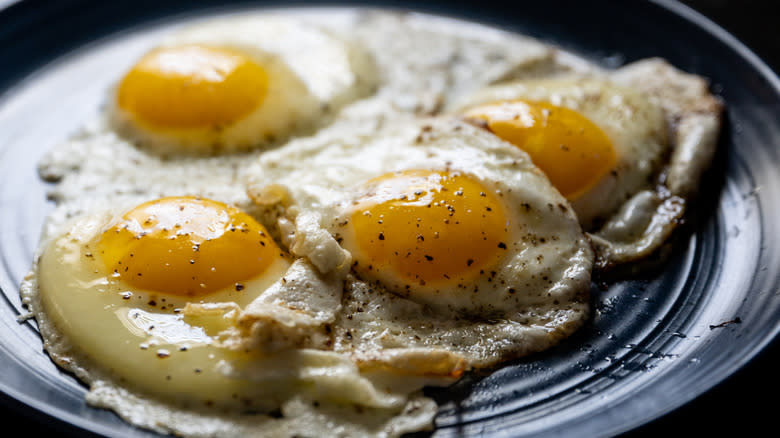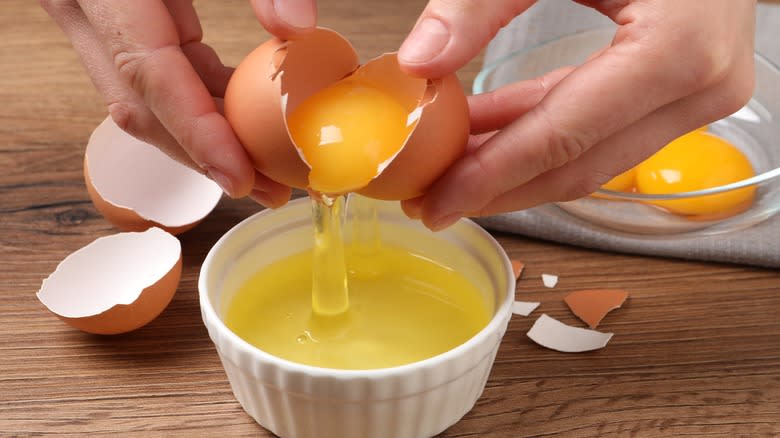For Perfect Fried Eggs, Separate The Yolks From The Whites

At first glance, eggs seem like the simplest of ingredients to cook. Yet, achieving that elusive perfect fried egg, particularly when aiming for a sunny-side-up finish, proves to be a surprising challenge for many. The appeal of a sunny-side-up egg lies in its visually striking contrast: a pristine, fully cooked white encircling a soft, vibrant yellow yolk. But getting to that point, where both components are cooked just right, is where the struggle lies.
The secret to nailing this dish lies in a step that might initially seem counterintuitive: separating the yolk from the white before they hit the pan. This simple hack opens the door to mastering the sunny-side-up egg, transforming an everyday task into an art form.
Why does this separation matter? It boils down to the different cooking rates of the egg white and yolk. Having them on the hot pan at the same time often ends up with the white undercooked while the yolk is overdone therefore missing the signature runny yellow delight. By separating the two egg components, you can ensure that each part is cooked precisely to its ideal state.
Read more: Hacks That Will Make Boiling Your Eggs So Much Easier
Mastering The Egg Separation Trick

To start, crack the egg and separate the white from the yolk. This can be done by transferring the yolk back and forth between the two shell halves over a bowl, allowing the white to fall away, or by using a dedicated egg separator. Once separated, heat your non-stick pan over medium heat with a bit of butter or oil to prevent sticking.
First, pour the egg white into the pan, letting it cook until it's starting to set but not fully firm. Then, carefully place the yolk back into the center of the white. This step is crucial for timing — the white begins to cook without overdoing it before the yolk is added. Continue cooking until the white is fully set and the yolk has attached to the white and warmed through to your desired level of runniness.
This technique shines for several reasons. Aesthetically, it's a game-changer. The egg white forms a clean, crisp edge around a perfectly round, unbroken yolk, achieving a professional look that's as appealing to the eye as it is to the palate. In terms of texture, it allows each component of the egg to reach its perfect state: the white is thoroughly cooked without being rubbery, and the yolk remains delicately runny or softly set, as you prefer. And beyond just the visual and textural benefits, this method offers a level of control and precision in cooking that elevates a simple fried egg into a dish worth savoring.
Read the original article on Tasting Table.

